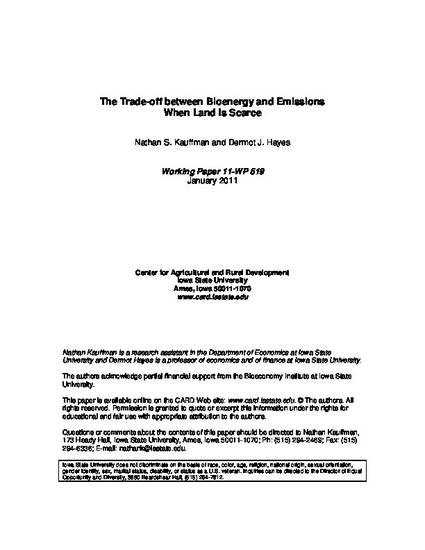
Agricultural biofuels require the use of scarce land, and this land has opportunity cost. We explore the objective function of a social planner who includes a land constraint in the optimization decision to minimize environmental cost. The inclusion of this land constraint in our optimization model motivates the measurement of emissions on a per-hectare basis. Switchgrass and corn are modeled as competing alternatives to show how the inclusion of a land constraint can influence life cycle rankings and alter policy conclusions. With land use unconstrained, ethanol produced from switchgrass is always an optimal feedstock relative to ethanol produced from corn. With land use constrained, however, our results show that it is unlikely that switchgrass would be optimal in the midwestern United States, but may be optimal in southern states if carbon is priced relatively high. Whether biofuel policy advocates for one feedstock over another should consider these contrasting results.
Available at: http://works.bepress.com/dermot_hayes/157/

This is a working paper of an article from Energy Policy, 54 (March 2013); 300-310. Doi: 10.1016/j.enpol.2012.11.036.